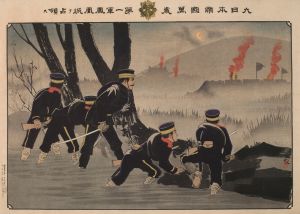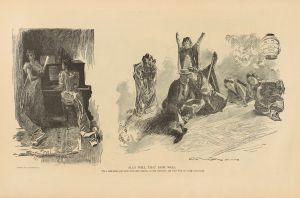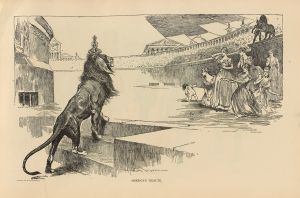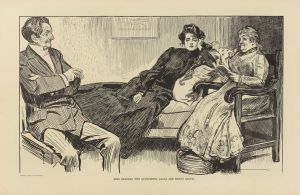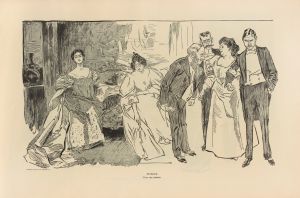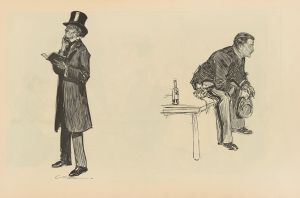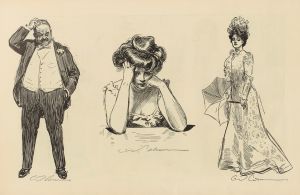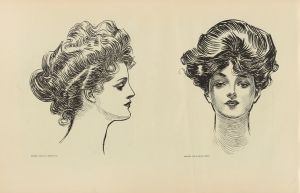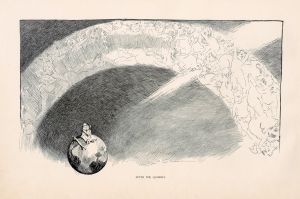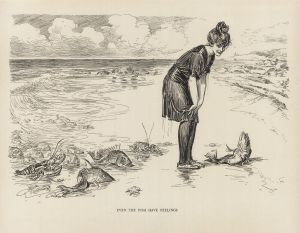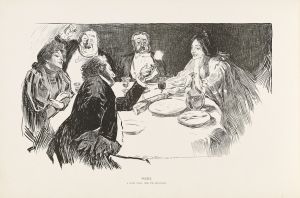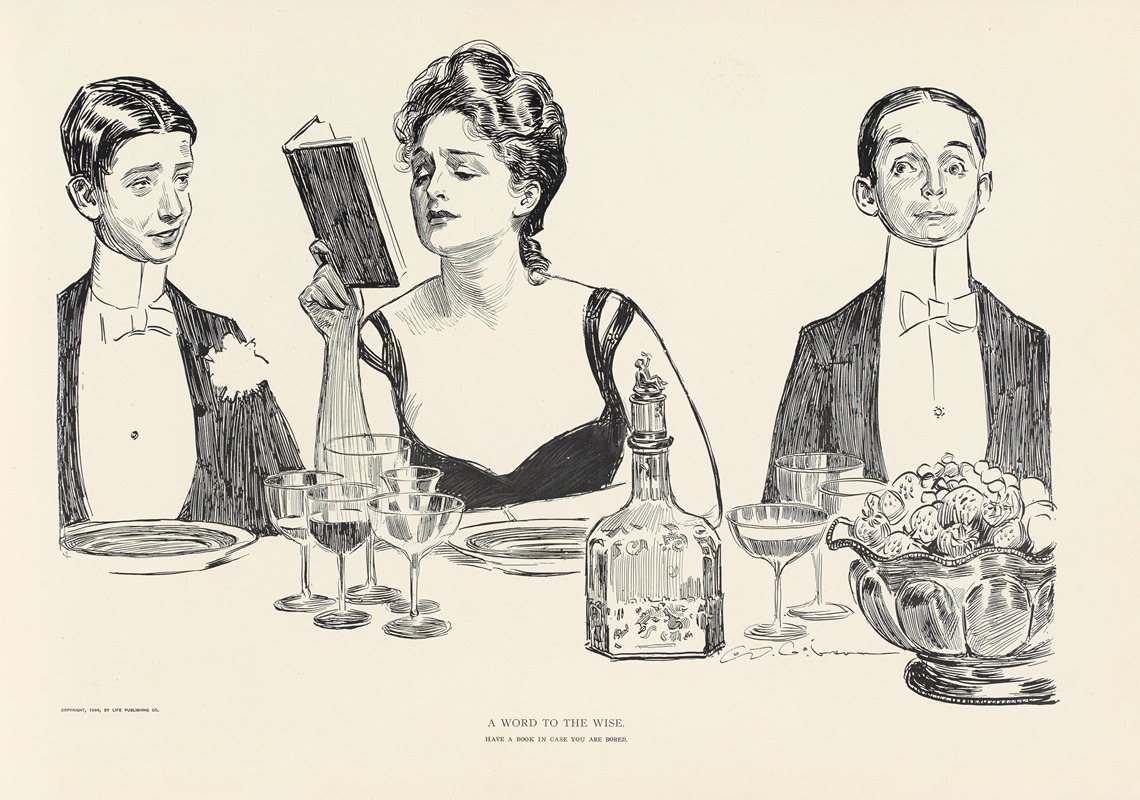
A word to the wise
A hand-painted replica of Charles Dana Gibson’s masterpiece A word to the wise, meticulously crafted by professional artists to capture the true essence of the original. Each piece is created with museum-quality canvas and rare mineral pigments, carefully painted by experienced artists with delicate brushstrokes and rich, layered colors to perfectly recreate the texture of the original artwork. Unlike machine-printed reproductions, this hand-painted version brings the painting to life, infused with the artist’s emotions and skill in every stroke. Whether for personal collection or home decoration, it instantly elevates the artistic atmosphere of any space.
Charles Dana Gibson was an influential American illustrator best known for his creation of the "Gibson Girl," a representation of the idealized American woman at the turn of the 20th century. Among his numerous works, "A Word to the Wise" is one of his notable illustrations, although specific details about this particular piece are not as extensively documented as some of his other works.
Gibson was born on September 14, 1867, in Roxbury, Massachusetts. He studied at the Art Students League in New York City, where he honed his skills in drawing and illustration. His career took off in the late 19th century when his illustrations began appearing in popular magazines such as Life, Harper's Weekly, and Scribner's. Gibson's work was characterized by its detailed pen-and-ink style, which captured the nuances of social life and the evolving roles of women in society.
The "Gibson Girl" became a cultural icon, symbolizing the independent and modern woman of the early 1900s. She was depicted as confident, stylish, and often engaged in various social activities. This character was not based on a single person but rather a composite of several women, and she became a standard of beauty and fashion during that era.
While "A Word to the Wise" is not as widely discussed as some of Gibson's other illustrations, it likely shares the same artistic qualities and social commentary that characterize his work. Gibson's illustrations often included subtle humor and wit, reflecting the social dynamics and gender roles of his time. His ability to capture the essence of an era through his art made him one of the most celebrated illustrators of his generation.
Gibson's influence extended beyond his illustrations; he played a significant role in shaping the public's perception of women and their place in society. His work contributed to the dialogue about gender roles and the changing landscape of American culture in the early 20th century. The "Gibson Girl" became a symbol of the new woman, one who was educated, active, and socially engaged.
Throughout his career, Gibson continued to produce illustrations that were both artistically impressive and culturally relevant. His work remains a valuable part of American art history, offering insights into the social and cultural shifts of his time. Although specific information about "A Word to the Wise" is limited, it is reasonable to assume that it embodies the same artistic excellence and cultural commentary that define Gibson's oeuvre.
Charles Dana Gibson passed away on December 23, 1944, leaving behind a legacy of art that continues to be studied and appreciated for its historical significance and artistic merit. His illustrations, including "A Word to the Wise," remain a testament to his skill and his ability to capture the spirit of an era.





